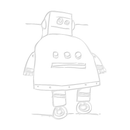Introduction: How to Design a Traffic Signal Using 3D CAD Software
Learn How to Design a Traffic Signal Using 3D CAD Software with the help of this article
Step 1:
How to Design a Traffic Signal Using 3D CAD Software
Traffic signals are essential components of modern transportation systems, ensuring safe and efficient movement of vehicles and pedestrians. Designing a traffic signal requires careful consideration of its structure, proportions, and functionality. With the help of 3D modeling software like SelfCAD, users can create accurate digital prototypes of traffic signals before physical production.
This article will provide a step-by-step guide on designing a traffic signal using SelfCAD. It will cover key aspects such as modeling the pole, signal lights, and additional structural details to create a realistic and functional design. By following this process, users will develop essential 3D modeling skills while gaining insight into the design of urban infrastructure
To access the interactive tutorial to this article, check out https://www.selfcad.com/tutorials/3m652618h4fo3j725pf2ux5g314h6c3k516a
Once you’ve launched the editor;
From the generators category on the toolbar choose shape generator; Set top radius to 15, bottom radius to 15, number of edges to 8, height to 10
Click + button to add new segment; Set top radius to 10, bottom radius to 10, height to 30
Click + button to add new segment; Set top radius to 5, bottom radius to 5, height to 150
Tick the checkmark to finalize shape generator
From the 3D Shapes category on the toolbar choose cylinder; Set top radius to 8, Bottom radius to 8, height to 20, vertical segments to 8, position y to 150
Click to finalize cylinder
From the 3D Shapes category on the toolbar choose cylinder; Set top radius to 3, Bottom radius to 3, height to 30, vertical segments to 10, position y to 157, position z to 21, rotation x to 90
Click to finalize cylinder
From the 3D Shapes category on the toolbar choose cube. Set width to 15, height to 20, depth to 50,position y to 150, position z to 60
Click to finalize cube
From the 3D Shapes category on the toolbar choose sphere; Set radius to 5, horizontal segments to 15, vertical segments to 7, position x to 7, position y to 155, position z to 45.
Click to finalize sphere
Click scale on the toolbar; Set x to 4
Click ‘x’ to close transformation panel
From the 3D Shapes category on the toolbar choose cylinder; Set top radius to 6, Bottom radius to 6, height to 6, vertical segments to 7, arc to 180,position x to 10, position y to 160, position z to 45, rotation z to 90
Click to finalize cylinder
From the 3D Shapes category on the toolbar choose cylinder; Set top radius to 5, Bottom radius to 5, vertical segments to 14, position y to 155, position z to 45, rotation z to 90
Click to finalize cylinder
Click on mesh 20 to select it
Click stitch & scoop on the toolbar; from the tool panel choose difference, choose mesh 24 to subtract.
Click to finalize difference
Click on mesh 16 to select it
Click copy button to copy selected objects; click move on the toolbar; Set z to 60.
Click copy button to copy selected objects; Set z to 75
Click ‘x’ to close transformation panel
Click on difference 1, difference 1(1), mesh 12 to select. Click on mesh 16(2) to deselect
Click color picker button to change color of object; Click grey
Click ok
Click stitch & scoop on the toolbar; From the tool panel choose union.
Click to finalize union
Click on mesh 16(2) to select. Click on union 1 to deselect
Click color picker button to change color of object; Click red
Click ok
Click on mesh 16(1) to select.Click on mesh 16(2) to deselect.
Click color picker button to change color of object; Click yellow
Click ok
Click on mesh 16 to select.Click on mesh 16(1) to deselect
Click color picker button to change color of object; Click green
Click ok
Click on mesh 8, 4, shape 1 to select. Click on mesh 16 to deselect
Click stitch & scoop on the toolbar; From the tool panel choose union.
Click to finalize union
Click color picker button to change color of object; Click black
Click ok
From the edit menu on the top toolbar click select all; click stitch & scoop on the toolbar; From the tool panel choose union.
Click to finalize union
As you continue honing your design skills, remember that SelfCAD offers a wealth of resources to support your learning journey. To deepen your understanding and explore more advanced features, consider checking out the interactive tutorials (https://www.selfcad.com/tutorials) available on the SelfCAD website. The tutorials page provides a treasure trove of guides, tips, and tricks that cater to designers of all levels.
More structured learning experience can also be accessed at the SelfCAD Academy (https://www.selfcad.com/academy/curriculum/), https://www.youtube.com/@3dmodeling101, and 3D Modeling 101 series (https://www.youtube.com/playlist?list=PL74nFNT8yS9DcE1UlUUdiR1wFGv9DDfTB). This comprehensive resource offers in-depth courses taught by industry experts, allowing you to master the intricacies of SelfCAD at your own pace




